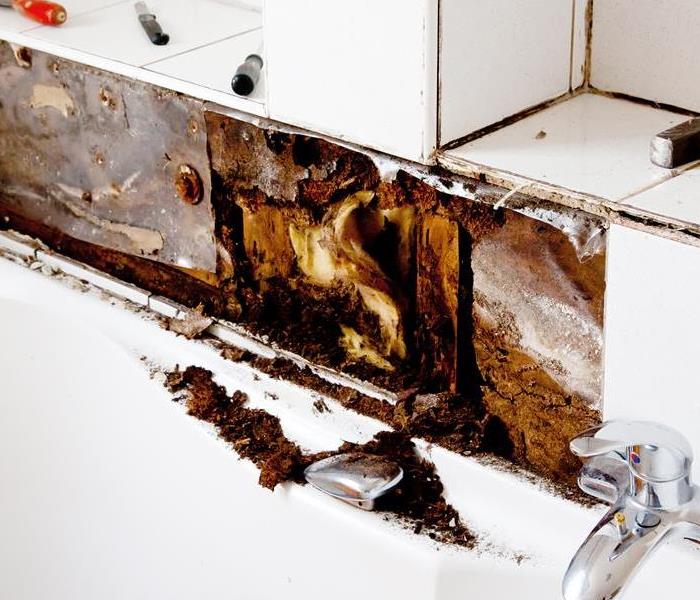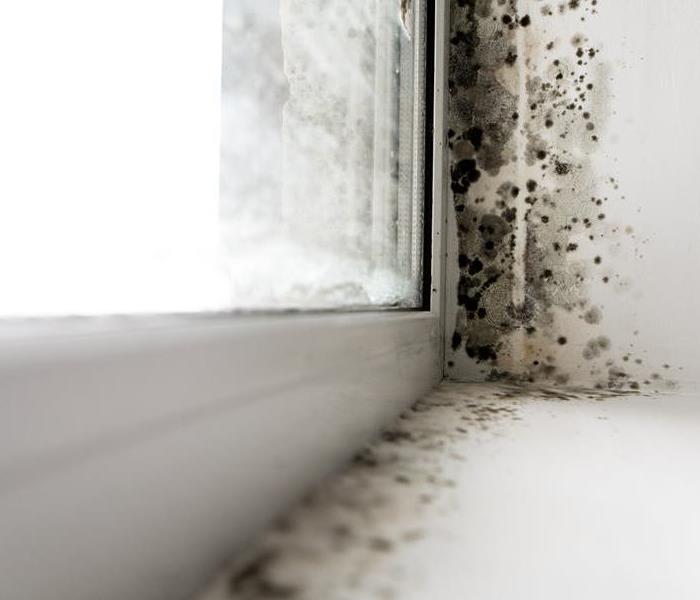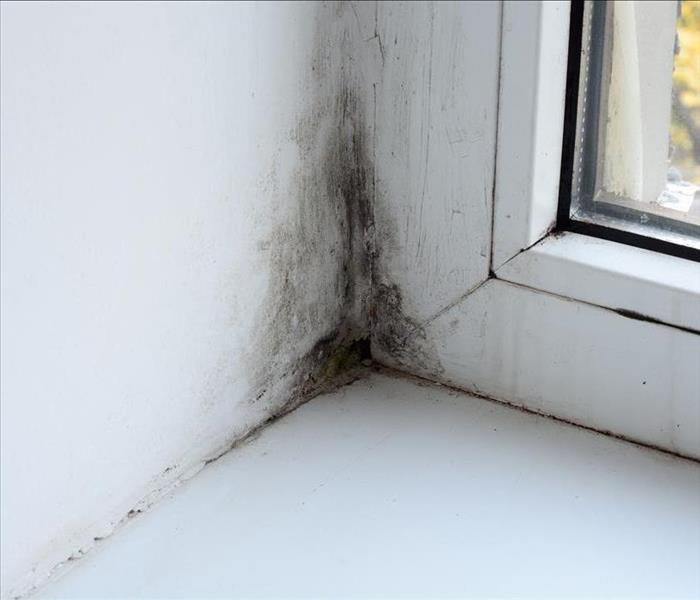Recent Mold Remediation Posts
Unraveling the Mystery of Mold in Insulation: Strategies for Detection and Remediation
3/6/2024 (Permalink)
Insulation plays a crucial role in maintaining a comfortable and energy-efficient home. However, when mold infiltrates this hidden layer, it can pose challenges to both the insulation itself and the overall well-being of your living space. In this blog, we'll explore effective strategies for detecting and remediating mold in insulation without discussing health concerns.
Detecting Mold in Insulation
Mold often emits a distinct musty odor. If you notice unpleasant smells in your home, especially in areas with insulation, it could be a sign of mold presence.
Inspect visible portions of insulation for any discoloration. Mold may appear as dark spots, irregular patterns, or fuzzy growth on the surface.
Water stains, leaks, or signs of water damage near insulation are red flags. Moisture provides an ideal environment for mold growth within insulation layers.
Consider external factors such as roof leaks, plumbing issues, or faulty gutters. These problems can contribute to water intrusion and mold growth within insulation.
Remediation Strategies
Begin by isolating the areas with mold-infested insulation. This prevents the spread of mold spores to unaffected parts of the home.
- Remove and Discard Contaminated Insulation:
In cases of extensive mold growth, it may be necessary to remove and discard the contaminated insulation. This prevents further mold development and ensures a fresh start.
Clean the surrounding areas, including the framework and adjacent surfaces, to eliminate any remaining mold spores. Use mold-killing solutions to disinfect the affected space.
- Address Underlying Causes
Identify and address the root causes of mold growth, such as leaks or water intrusion. Fixing these issues is crucial to preventing future mold infestations in insulation.
Enhance ventilation in the affected areas. Good airflow helps to keep the environment dry and reduces the likelihood of mold recurrence.
- Apply Mold-Resistant Coatings
Consider applying mold-resistant coatings on the surfaces surrounding insulation. These coatings act as a protective barrier, discouraging mold growth.
Install Vapor Barriers
Install vapor barriers in areas prone to moisture. Vapor barriers help control humidity levels and prevent moisture from reaching the insulation.
Regularly monitor humidity levels within your home. Maintaining optimal humidity prevents the conditions that favor mold growth in insulation. For extensive mold infestations or cases where insulation replacement is necessary, consider hiring professionals with expertise in mold remediation. Implement preventative measures, such as regular home inspections, prompt repairs of leaks, and ongoing maintenance, to minimize the risk of mold returning to insulation.
Detecting and remediating mold in insulation requires a proactive approach. By identifying signs of mold early on and taking swift remedial actions, you safeguard the integrity of your insulation and contribute to a healthier home environment. Regular maintenance, addressing underlying causes, and promoting proper ventilation are key components in ensuring your insulation remains mold-resistant. Through these measures, you can enjoy the benefits of efficient and uncontaminated insulation in your home.
Can Mold Grow After a Leak is Fixed?
10/24/2023 (Permalink)
 Fixing a leak is crucial to prevent mold damage from your home or business.
Fixing a leak is crucial to prevent mold damage from your home or business.
Dealing with water leaks in your home can be a stressful experience, and it's crucial to address them promptly. One common concern is whether mold can continue to grow even after a leak is fixed. In this blog, we'll dive into the factors that can contribute to mold growth post-repair and what you can do to prevent it. Let's explore this topic to help you maintain a clean living environment in your Woburn, MA, home.
Understanding Mold Growth
Mold is a natural part of the environment, and its spores are everywhere, including the air inside your home. Mold spores can become problematic when they find suitable conditions for growth. The key factors that contribute to mold growth are moisture, warmth, and organic materials (such as wood, drywall, or fabric).
Mold and Water Leaks
Water leaks provide the ideal environment for mold growth. When a leak occurs, moisture is introduced into areas that are often hidden from view, such as within walls, under floors, or in ceilings. If these areas remain damp, it creates the perfect breeding ground for mold.
The Importance of Quick Repairs
Addressing water leaks quickly is essential in preventing mold growth. When leaks are fixed quickly and thoroughly, the moisture source is removed, and the conditions that favor mold growth are disrupted. However, even with timely repairs, mold can still develop if moisture was present for an extended period before the leak was discovered.
Hidden Moisture and Mold
One challenge homeowners face is identifying hidden moisture and mold growth. Mold can thrive in concealed areas for weeks or even months before becoming visible or producing noticeable odors. This is why it's crucial to not only fix the leak but also thoroughly dry and assess affected areas for potential mold growth.
Preventing Post-Repair Mold Growth
To prevent mold from growing after a leak is fixed, consider the following steps
- Thorough Inspection: After repairing the leak, conduct a thorough inspection of the affected area to check for any signs of moisture or mold.
- Proper Drying: Ensure that all affected materials are completely dried. Use fans, dehumidifiers, or professional drying equipment to expedite the drying process.
- Mold Remediation: If you suspect or discover mold growth, consult with mold remediation professionals like SERVPRO®. They have the expertise and equipment to safely and effectively address mold issues.
- Regular Maintenance: Implement a regular maintenance schedule for your home to catch potential leaks and moisture issues early.
- Improved Ventilation: Proper ventilation in areas prone to moisture, like bathrooms, basements, and kitchens, can help prevent condensation and reduce the risk of mold growth.
While fixing a leak is a critical step in preventing mold growth, it's not a guarantee that mold won't develop afterward. Mold can still thrive in concealed areas if moisture was present for an extended period. Prompt repairs, thorough drying, regular maintenance, and vigilance in monitoring hidden moisture are essential in preventing post-repair mold growth. If you suspect mold issues in your Woburn, MA home, don't hesitate to contact SERVPRO® of Burlington/Woburn for professional mold remediation services. Stay proactive, Woburn, and enjoy a mold-free living environment!
Mastering Mold: Understanding How Mold Spreads and How to Prevent It in Your Home
5/24/2023 (Permalink)
 Mold can spread, cleanup is crucial. Understand mold to prevent further damage in your home.
Mold can spread, cleanup is crucial. Understand mold to prevent further damage in your home.
Mold is a common household issue that can cause damage to your property. Understanding how mold spreads is crucial in effectively preventing its growth and protecting your home. In this blog, we will explore how mold spreads and what you can do to prevent its proliferation.
What is Mold?
Mold is a type of fungus that thrives in moist environments. It reproduces through spores that are lightweight and can easily travel through the air. Mold spores are always present in the indoor and outdoor air, but they only become a problem when they find suitable conditions to grow and multiply.
How Does Mold Spread?
Airborne Transmission
Mold spores can travel through the air and enter your home through windows, doors, ventilation systems, or even on your clothing and shoes.
Mold can spread through water intrusion, such as leaks in roofs, walls, plumbing, or floods. When moisture is present, mold spores can settle and grow on damp surfaces, leading to mold growth.
Mold can also spread through organic materials such as wood, paper, fabric, and carpet. Mold spores can settle on these materials and start growing if the conditions are favorable.
Inadequate ventilation in your home can trap moisture, creating a conducive environment for mold growth. Bathrooms, kitchens, and basements are particularly susceptible to mold growth due to high humidity levels and poor ventilation.
Mold can spread through contaminated household items such as furniture, mattresses, and clothing. If these items are exposed to moisture or have mold spores on them, they can contribute to the spread of mold in your home.
Preventing Mold Spread
To prevent the spread of mold in your home, it's essential to take proactive measures to control moisture and eliminate favorable conditions for mold growth. Here are some effective tips:
Promptly repair any water leaks in your home, including roofs, walls, plumbing, and appliances. Dry out the affected areas thoroughly and address the source of the leaks to prevent mold growth.
Keep indoor humidity levels below 50% to inhibit mold growth. Use dehumidifiers in high-moisture areas such as bathrooms, kitchens, and basements, and ensure proper ventilation to allow moisture to escape.
Proper ventilation is crucial in preventing mold growth. Use exhaust fans in bathrooms and kitchens to remove excess moisture, and ensure that your home has adequate ventilation in all areas.
- Clean and Dry Household Items
Regularly clean and dry household items such as furniture, carpets, and clothing to prevent mold growth. Avoid leaving damp items lying around and promptly address any water damage or spills.
Inspect and Maintain
Regularly inspect your home for signs of moisture, such as dampness, water stains, or musty odors. Address any issues promptly and maintain your home properly to prevent mold growth.
After the clean up process ensure your property is put back together using mold resistant materials.
Use Mold-Resistant Materials
Consider using mold-resistant materials, such as mold-resistant drywall, paint, and insulation, during renovations or new construction. These materials are designed to inhibit mold growth and can be effective in preventing mold spread.
Keep Indoor Areas Clean
Regularly clean and disinfect indoor areas, especially in high-moisture areas, to prevent mold growth. Pay attention to areas such as bathrooms, kitchens, and basements where mold is more likely to thrive.
In conclusion, understanding how mold spreads and taking preventive measures to control moisture is crucial in preventing mold growth in your home. By following these tips and maintaining a clean and dry environment, you can effectively prevent mold from spreading and protect the health of your home and family.
When to Use Mold Remediation
1/20/2023 (Permalink)
 Mold remediation can be a big job, but it’s worth it to prevent the problems it can cause.
Mold remediation can be a big job, but it’s worth it to prevent the problems it can cause.
Mold is one of the most common household problems. According to many experts, mold is present in a little over half of all homes in the United States. Mold can be detrimental to the structure of your home and your belongings. In this blog post, we will discuss everything you need to know about when you might need mold remediation and how that process works.
When to Remediate Mold
Mold remediation is necessary when mold growth is present in a building or on surfaces. Mold can cause problems and damage to the structure of a building, so it is important to address it as soon as it is discovered. Some common indicators of mold include musty odors and visible mold growth. If you suspect mold in your home or business, it is important to have a professional assess the situation and determine the appropriate course of action for mold remediation. This may include cleaning, removing contaminated materials, and addressing the source of moisture that is allowing the mold to grow.
Act Quickly
Delaying mold remediation can lead to a number of problems including property damage. Mold often destroys the material it's growing on by breaking down its structure through enzymes and acids produced by the fungus itself; this makes wood rot faster than normal, which will eventually result in structural collapse if left untreated for too long—and that can cost thousands of dollars in repairs!
Time for Mold Remediation Process
The answer to this question is, unfortunately, not a simple one. There are many different factors that affect how long it takes to clean up the mold.
If you have a small problem with mold growth and you respond quickly to the problem, then it may take as little as a few days for your mold remediation contractor to remove all traces of contamination in your house. However, if you have a large amount of damage or infestation then it could take several weeks for everything to be cleaned up properly.
Use SERVPRO to combat mold.
If you suspect that mold is growing in your home or business, it's important to have it removed right away. You can rely on SERVPRO of Burlington/Woburn to help with all of your mold remediation needs. SERVPRO's team of certified professionals is ready to assist you:
- We'll survey the affected area and identify any potential sources of moisture.
- We'll work with you on our plan for removing the mold, and then complete the job using safe and effective methods.
- Our professionals will clean up any left-behind debris so that everything is back to normal (or better!).
Mold remediation can be a big job, but it’s worth it to prevent the problems it can cause. When you have SERVPRO professionals on your side, you can trust that they will be able to help you with all of your needs. So if you suspect there may be mold in your Woburn home or business, contact us today so we can come out and inspect!





 24/7 Emergency Service
24/7 Emergency Service


